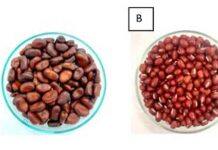Pompe disease is a rare genetic disorder that disables heart and skeletal muscles and can lead to early death if untreated. The only available treatment is enzyme replacement therapy that must be frequently injected and can cost up to a half-million dollars yearly.
Now, researchers from the University of Maryland have developed a method that could make enzyme replacement therapy more efficient, cheaper and less frequent. A study on their new method was published today in the journal Chemical Science.
“This work holds great promise for a better, less costly treatment of the life-threatening Pompe disease,” said UMD Chemistry and Biochemistry Professor Lai-Xi Wang, corresponding author of the study.
The disorder, which appears in about 1 of every 40,000 births, eliminates a critical enzyme needed to turn glycogen into glucose, the sugar that fuels muscles. Instead of breaking down, glycogen builds up in the cells, eventually damaging muscle tissue, especially the heart.
Currently, the only treatment for Pompe disease involves injecting large amounts of the missing enzyme, known as acid alpha-glucosidase (GAA), into the bloodstream of patients—with the hope that some of it will get into the cells and clean up the built-up glycogen. But usually only a small amount of the enzyme reaches the cellular machinery where it is needed.
Wang and his team studied the chemical synthesis and binding properties of various molecules and discovered a ligand—a binding molecule—that was easily recognized by a specific receptor in the cellular transport system. This system carries compounds from the bloodstream across the cell membrane into the machinery where glycogen is broken down into glucose.
Once they found that ligand, Wang’s team developed a simple method to attach it to the GAA enzyme. Working with colleagues from the National Institutes of Health, the researchers tested their engineered GAA enzyme with the attached ligand in model cells and found that it was much more efficient at delivering GAA to the target machinery than the current enzyme replacement therapy.







































